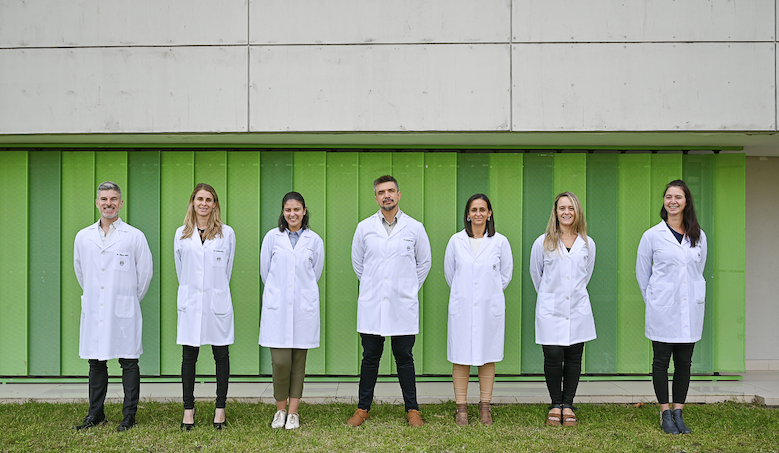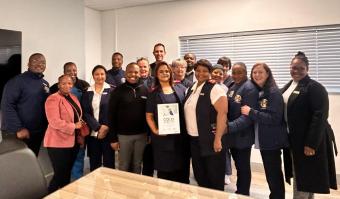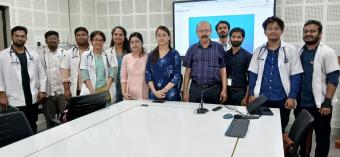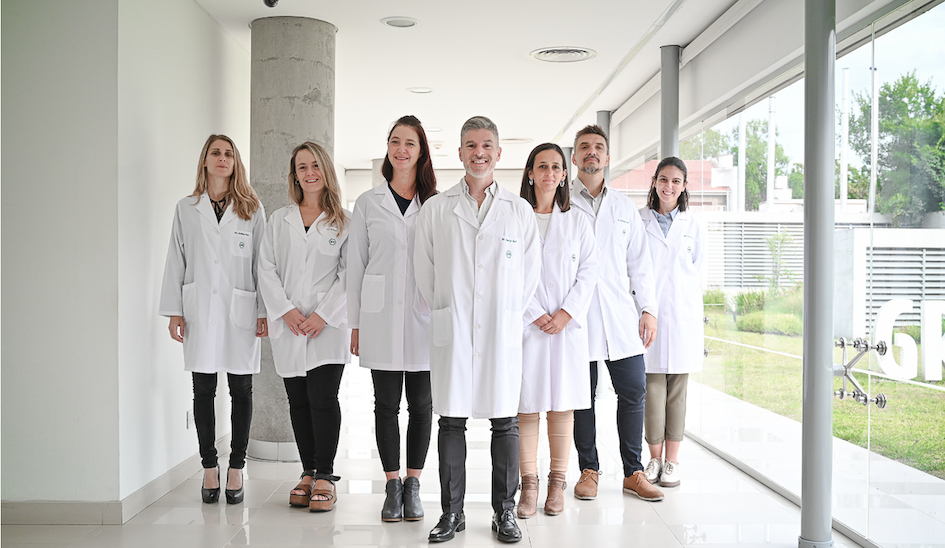
On 2 May 2022, Dr Ignacio Cigalini, an interventional cardiologist and coordinator of the AMI code at Hospital Privado de Rosario in Argentina, performs a transcatheter aortic valve replacement (TAVR) on a 63-year-old man.
A TAVR procedure, in which a catheter is used to fix a replacement valve on top of the old one, has several advantages over conventional surgery, but does carry an elevated risk of acute stroke. Despite every precaution, the patient suffers a stroke.
At precisely 1.12 pm a loudspeaker in Hospital Privado de Rosario announces Code Stroke.
The time to treatment will be a record-breaking 10 minutes, during which the hospital’s head of neurology Dr Guadalupe Maria Bruera will make several life-changing decisions.
In-hospital vs community-onset strokes
Up to 17% of all strokes occur during acute care hospitalisation in patients admitted for another diagnosis or procedure, according to a paper on in-hospital ischemic stroke by Dr Ethan Cumbler of the University of Colorado School of Medicine published in Neurohospitalist in 2015. Between half and two-thirds of these are perioperative and periprocedural, with cardiac surgery patients at greatest risk.
In-hospital strokes have substantially worse outcomes than community-onset strokes and not only because they occur in patients who are older, already ill and have higher rates of medical or surgical contraindicactions for thrombolysis. In-hospital strokes also tend to have longer delays to evaluation and treatment.
A February 2022 scientific statement from the American Heart Association cites evidence that patients with in-hospital stroke have a significantly longer interval from symptom recognition to neuroimaging compared with stroke patients in the emergency department setting (4.5 hours versus 1.2 hours). A study from the Get With The Guidelines registry found that compared with community-onset stroke, the time that elapsed from stroke recognition to thrombolysis was also longer, at 81 minutes versus 60 minutes.
The reasons for this include stroke symptoms being wrongly attributed to the illness for which the patient was hospitalised, to the effect of sedation or anesthesia, or to side effects of medications. Unlike patients with community-onset stroke, the victims of in-hospital stroke also do not enter the system through the emergency department with its culture of urgency. Rather, they are likely to be cared for by staff who are inexperienced in stroke diagnosis and less aware of the importance of acting fast.
Ten precious minutes
The 63-year-old citizen of Rosario is one of the lucky ones. Dr Cigalini, like everyone else at Hospital Privado de Rosario, regularly attends the stroke code training that takes place every month, and is acutely aware of the importance of immediate action in case of stroke. When he recognises that his patient is manifesting aphasia, he activates Code Stroke without a moment’s hesitation.
En route from the cath lab to the imaging room a short distance away, an NIHSS evaluation by the neurologist on duty Dr Guadalupe Bruera delivers a score of 12. Using magnetic resonance angiography, it takes just two minutes to rule out bleeding and locate the occlusion in the segment from M3 to the left middle cerebral artery. Recognising that the clot cannot be reached with surgical thrombectomy, Dr Bruera makes the decision to thrombolyse. She administers the bolus herself. The rest of the infusion will take place in the ICU where the patient will remain for 60 minutes.
Dr Cigalini has remained present throughout, providing critical data that informs the therapeutic decision and managing communication with the patient’s family.
The entire process from stroke code activation to treatment has taken just 10 precious minutes.
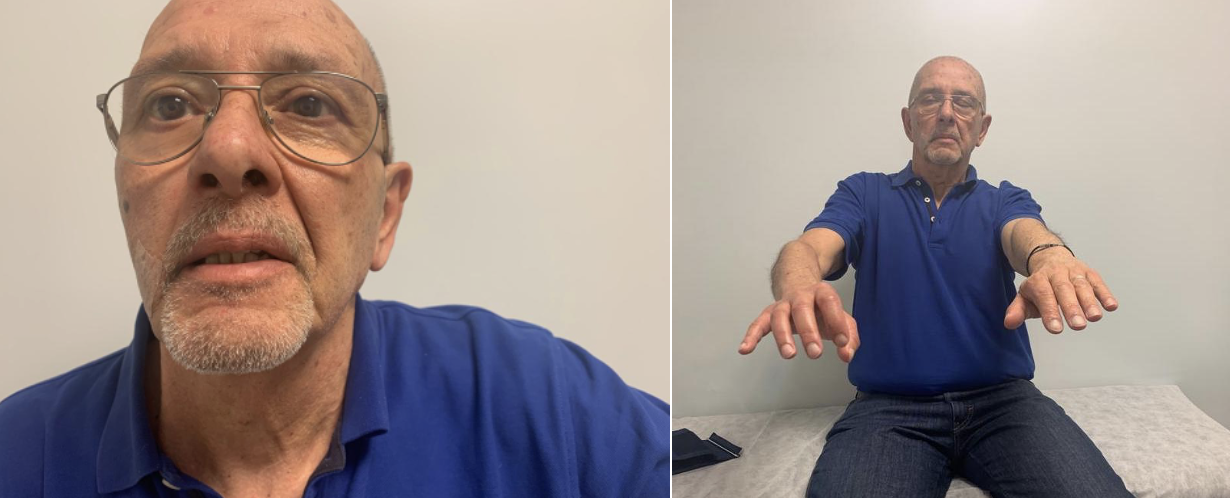
Everyone’s work must be respected
Hospital Privado de Rosario admits about 219 patients with stroke per year and has an average door-to-needle time of 40 minutes for community-onset stroke. Its average time-to-treatment for in-hospital stroke bucks the trend at 35 minutes. The explanation lies in a clearly structured stroke code protocol and transdisciplinary teamwork, Dr Bruera says. Crucially for the optimal management of in-hospital stroke, regular stroke code training involves staff from all departments throughout the hospital. As a result there’s wide awareness of the need to act with speed when stroke is suspected, and everyone knows the drill when Code Stroke is announced.
A highly organised patient pathway minimises treatment delays, and simulations facilitated by the Angels Initiative help pinpoint opportunities for improvement, but teamwork is the deciding factor and a flattened hierarchy helps mobilise everyone in the team.
“One of the fundamental aspects of stroke is transdisciplinarity,” Dr Bruera says. “Ten to 15 medical professionals participate in a stroke code, along with nursing and administrative staff.
“Every member of this team must feel empowered – something that doesn’t only come from training but also from example. Although there is one person who coordinates the stroke code, everyone’s work must be respected.
“A successful stroke team is built on the principle that the construction of knowledge is always collective. Nothing can be learned individually.”
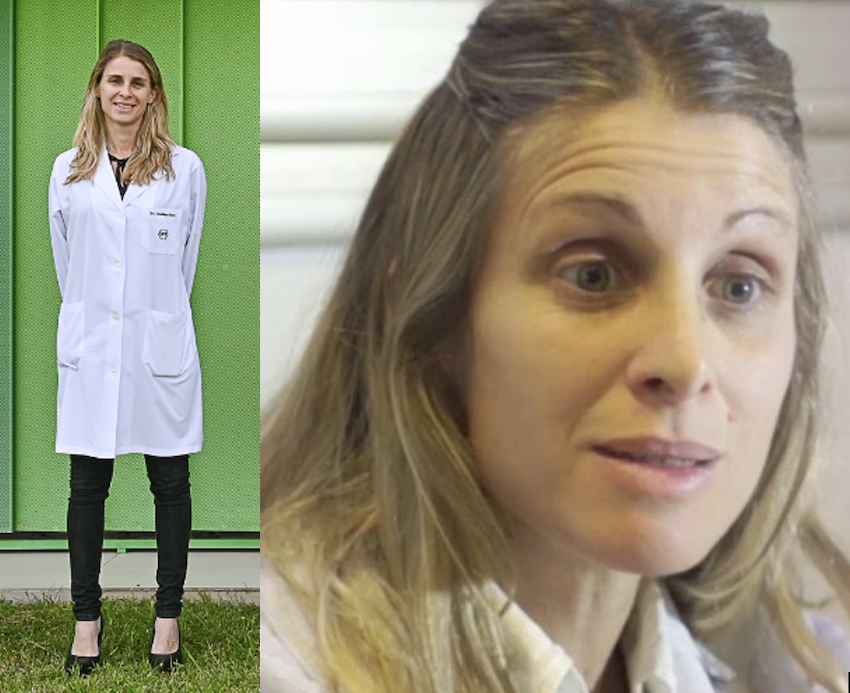
The fundamental goodness of human beings
It’s evident that Rosario’s 10-minute “miracle” is only partly the result of organisation and training. The success of this stroke team is also rooted in principle, and the principles that govern stroke management at HPR are inseparable from Dr Bruera’s personal values.
She describes herself as “a person who tries to learn daily” and her hospital as an environment that facilitates learning: “I learn a lot from patients, nurses, secretaries and colleagues.”
The quality of medicine practiced at her hospital, and by her colleagues in Cardiology in particular, is one of the reasons she has chosen Rosario over opportunities to build her career elsewhere.
She says, “I love my country deeply, even with all its flaws, and in particular the city of Rosario.”
Love of country and learning is a family legacy. Dr Bruera and her brothers were raised by a psychologist mother and a neurologist father who are both also teachers. She says, “I grew up in a family whose core values reflected the fundamental goodness of human beings, such as being supportive and respectful of others.”
These values find expression in the stroke programme at Hospital Privado de Rosario and, along with an organised pathway and split-second decision making, can sometimes deliver a miracle in 10 minutes.
